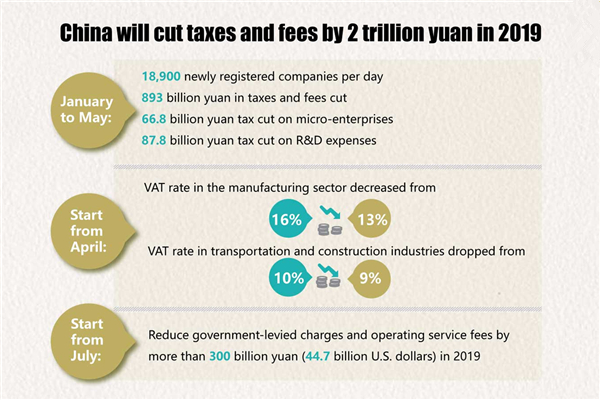Australian small businesses technology adoption is proving to be a critical factor in shaping the future of the economy down under. Despite the potential benefits, many of these small to medium enterprises (SMEs) are facing a significant technology gap Australia needs to address urgently. Recent reports highlight that only 26% of these businesses made profitable technology investments last year, compared to over 50% in other Asia-Pacific regions. This sluggishness in embracing digital solutions, such as digital financial reporting and artificial intelligence (AI), hampers small business productivity and threatens Australia’s economic competitiveness. As they remain stuck in traditional methods, these SMEs risk losing ground to faster-moving competitors, emphasizing the pressing need for strategic support and investment in technology adoption.
The landscape of technology utilization among small enterprises in Australia is facing notable challenges that hinder their progression. Often referred to as SMEs, small to medium-sized businesses are experiencing a lag in integrating innovative solutions compared to their regional counterparts. This operational inertia not only stifles growth but also poses risks to their market stability as the global economy increasingly shifts towards digital frameworks. To mitigate this, discussions surrounding AI governance and digital transformation are becoming pivotal in fostering an environment conducive to tech integration. By addressing these gaps and encouraging small business technology evolution, Australia can enhance its overall competitiveness and productivity.
The Urgent Need for Technology Adoption in Australian SMEs
Australian small businesses are at a critical juncture regarding technology adoption. With rapid advancements in digital tools and systems, it’s essential for these enterprises to transition from traditional operations to more automated and efficient practices. Unfortunately, a substantial technology gap exists within the sector, where many SMEs struggle to invest in or even adopt available technologies. Current trends indicate that less than a quarter of small businesses in Australia made profitable technology investments last year, starkly contrasting with the regional average of over 50%.
This underinvestment in technology not only hampers individual business productivity but also threatens Australia’s overall economic competitiveness. As neighboring countries embrace digital solutions, Australian SMEs are left fighting an uphill battle to keep pace. The resulting disparity in capability and efficiency may lead to these businesses falling further behind, risking their sustainability and growth. It’s imperative that small enterprises overcome these barriers and embrace technologies, especially AI, to stay relevant in today’s market.
AI Regulation: A Double-Edged Sword for Small Businesses
The current landscape of AI regulation in Australia presents both opportunities and challenges for small businesses. While the move towards responsible and measured regulation is commendable, CPA Australia’s insights highlight that such an approach may inadvertently stifle innovation. The focus should not only be on regulating AI but also facilitating its integration into small business operations. Recommendations for incentives and support mechanisms can help mitigate the knowledge and capability gap that many SMEs face.
The reality is that most small business owners are preoccupied with their day-to-day operations, leaving little time or resources to explore the benefits of AI technology. This disconnect needs to be addressed through practical regulatory measures that not only protect businesses but also empower them to harness AI for increased productivity and growth. By fostering an environment conducive to technology adoption, the Australian government can help level the playing field and ensure SMEs are not left behind.
Digital Financial Reporting: A Pathway to Efficiency
Digital financial reporting stands out as a crucial advancement for Australian businesses, especially amidst the growing need for efficiency. The recommendation for mandatory digital financial reporting for listed entities presents an immediate opportunity for businesses to streamline their operations. This initiative not only fosters transparency but also aids in reducing errors associated with manual data handling. The transition to digital formats allows for real-time analysis, which can significantly enhance decision-making processes within SMEs.
However, despite the technology becoming widely accessible for over a decade, the uptake remains disappointingly low. This highlights a broader challenge where even established companies struggle with technological changes. Mandating digital financial reporting does not merely improve operational efficiency; it also positions Australian SMEs to be more competitive on a regional and global scale. By embracing these practices, businesses could improve their productivity levels and ensure they are better equipped to respond to market demands.
The Asia-Pacific Technology Adoption Gap
Recent data reveals a concerning trend: Australian small businesses are lagging significantly behind their Asia-Pacific counterparts in terms of technology adoption. With only 26% of local SMEs reporting profitable investments in new technologies, the stark contrast to regional averages—wheremore than half experience such benefits—paints a worrying picture of Australia’s competitiveness. Countries such as Singapore and Vietnam have effectively harnessed technology, creating a robust ecosystem that supports business growth and innovation.
This widening technology gap prompts urgent action from Australian policymakers and business leaders. Without a strategic commitment to closing this divide, Australian SMEs risk diminishing prospects for growth and sustainability. Collaborative efforts that promote technology investment and equip businesses with necessary tools and knowledge will be essential in reversing this trend and maintaining Australia’s competitive edge in the global arena.
Bridging the Technology Skills Gap
A significant barrier hindering technology adoption within Australian SMEs is the pronounced skills gap. The lack of expertise and trained personnel to support new technologies contributes to the hesitation many small business owners feel towards investing in tools like AI. According to recent surveys, only 18% of Australian small businesses sought external IT consultancy, compared to a regional average of 28%, further underscoring the need for improved access to technology education and training.
To effectively bridge this skills gap, a concerted effort must be made by both the government and educational institutions to provide tailored training programs. By equipping SMEs with the knowledge and technical skills needed to embrace digital transformation, businesses can gain the confidence necessary to invest in innovative technologies. This approach not only enhances individual business capabilities but also fosters a more tech-savvy workforce, ultimately driving overall productivity growth.
Building Business Confidence through Technology Investment
Business confidence is a crucial factor influencing the decision to invest in new technologies, yet recent findings reveal a troubling drop in optimism among Australian SMEs. Only 55% of these businesses expect to experience growth by 2025, compared to a regional average of 71%. This discrepancy highlights the urgent need for strategies that boost confidence and encourage investment in technology, particularly as the competitive landscape continues to evolve.
By fostering a supportive environment that offers incentives and guidance for technology adoption, Australian SMEs can significantly enhance their outlook for growth. Implementing policies that emphasize the benefits of technology, along with success stories from early adopters, can inspire businesses to venture into new territories. Ultimately, building business confidence through technology investment is essential for not just individual success, but the economic health of Australia as a whole.
The Role of Government in Supporting Technology Adoption
Government policy plays a pivotal role in fostering an environment conducive to technology adoption among small businesses. CPA Australia’s insights emphasize that while current AI regulations seek to protect and manage emerging technology, there is an equally important need for policies that encourage and support SME investment in these tools. By providing incentives, subsidies, and education to small business owners, the government can help bridge the technology gap that currently exists.
Moreover, government bodies should actively engage with the business community to understand the specific challenges these enterprises face in adopting new technologies. Building support systems that address these challenges will not only empower SMEs but will also drive national economic resilience. Investing in tailored programs that enhance capabilities with respect to technology integration should be a key focus for policymaking.
Enhancing Productivity through Digital Transformation
Embracing digital transformation is no longer a luxury for Australian small businesses but a necessity for enhancing productivity. The integration of modern technologies allows for streamlined processes, better data management, and increased operational efficiencies, leading to improved bottom lines. As seen in the Asia-Pacific region, businesses that successfully implement digital solutions benefit from greater market responsiveness and innovation capabilities.
To truly harness the potential of digital transformation, Australian SMEs must prioritize technology investments and overcome existing barriers. Creating a culture of continuous improvement and adaptation will enable these businesses to not only catch up but also thrive in an increasingly digital economy. This commitment to transformation is essential for remaining competitive and ensuring sustainable growth in the long term.
Leveraging Technology for Competitive Advantage
In a rapidly evolving marketplace, leveraging technology can provide a significant competitive advantage for Australian SMEs. The strategic adoption of digital tools, such as AI and data analytics, allows businesses to make more informed decisions, optimize supply chains, and tailor customer experiences. By effectively utilizing technology, small businesses can differentiate themselves from competitors and capture greater market share.
However, the effective use of technology requires not just investment but also a strategic mindset. SMEs must cultivate an understanding of how various technologies can align with their business objectives and enhance their value proposition. Furthermore, fostering partnerships with tech providers and industry experts can offer SMEs the resources needed to innovate and implement tech-driven solutions effectively.
Frequently Asked Questions
How can Australian small businesses overcome the technology gap in Australia?
To overcome the technology gap in Australia, small businesses should prioritize technology adoption by seeking government support and incentives aimed at improved SME technology investment. This involves pitching for better educational programs and practical guidance on implementing new technologies, including AI, to enhance productivity.
What steps should Australian small businesses take for better technology adoption?
Australian small businesses can take proactive steps for better technology adoption by engaging with local economic bodies and seeking expert advice on technology investments. Creating a technology roadmap, prioritizing digital financial reporting, and participating in training programs can enhance their capabilities and competitiveness.
What role does AI regulation play in the technology adoption of Australian small businesses?
AI regulation in Australia plays a crucial role by shaping the landscape for technology adoption among small businesses. A balanced approach can foster innovation while ensuring that Australian SMEs receive practical guidance and support necessary for effective technology investments.
Why is digital financial reporting important for small business productivity?
Digital financial reporting is vital for small business productivity as it streamlines data management, reduces error rates, and enhances transparency. Machine-readable financial statements enable faster analysis by investors and regulators, ultimately aiding small businesses in making informed decisions and improving efficiency.
How does technology adoption impact the competitiveness of Australian SMEs?
Technology adoption is essential for the competitiveness of Australian SMEs, as it enhances productivity and allows them to keep pace with global counterparts. Firms that embrace digital solutions can tap into new revenue streams, improve operational efficiency, and ultimately boost their economic impact in the Asia-Pacific region.
What challenges do Australian small businesses face in adopting new technologies?
Australian small businesses face several challenges in adopting new technologies, including limited financial resources, lack of expertise, and inadequate support mechanisms from the government. Additionally, many SMEs are too absorbed in day-to-day operations to explore potential technology investments that could enhance their business.
How can Australian SMEs improve their technology adoption rates compared to their regional competitors?
To improve technology adoption rates, Australian SMEs should actively seek government incentives, invest in staff training on digital tools, and collaborate with technology providers. They should also track best practices from regional competitors to implement effective technology strategies that drive business growth and adaptability.
What insights does the CPA Australia survey provide regarding technology adoption by small businesses?
The CPA Australia survey highlights that only 26% of Australian small businesses made profitable technology investments, significantly lower than the regional average of 56%. This underlines the urgent need for targeted support and strategic investments in technology to help these businesses catch up and thrive.
| Key Points | Details |
|---|---|
| Government’s Approach | The government’s cautious approach to AI regulation may overlook vital support opportunities for struggling SME technology adoption. |
| Productivity Risks | There is a risk of Australian SMEs falling behind regional competitors who are adopting technologies more quickly, impacting overall productivity. |
| Technology Adoption Statistics | Only 26% of Australian small businesses invested in profitable technology last year, compared to over 50% regionally. |
| Reality of SMEs | The report assumes capabilities that many SMEs lack, focusing primarily on daily operations rather than technology investments. |
| Digital Reporting Recommendations | CPA Australia urges the immediate adoption of mandatory digital financial reporting to improve corporate data management. |
Summary
Australian small businesses’ technology adoption is crucial for maintaining competitiveness in a rapidly evolving market. As highlighted by CPA Australia, many SMEs are currently behind their Asia-Pacific counterparts in embracing technological solutions. Urgent action is needed to close this gap, including government support through incentives and educational initiatives, to ensure that Australian small businesses can effectively leverage technology for growth and innovation.



